Delay Differential Equations
Part I: Constant Lags
L.F. Shampine
Department of Mathematics
Southern Methodist University
Dallas, Texas 75275
shampine@smu.edu
www.faculty.smu.edu/shampine
�
Delay Differential Equations
Delay differential equations (DDEs) with constant lags
τj > 0 for j = 1, . . . , k have the form
y′(t) = f (t, y(t), y(t − τ1), . . . , y(t − τk))
An early model of the El Niño/Southern Oscillation
phenomenon with a physical parameter α > 0 is
T ′(t) = T (t) − αT (t − τ )
A nonlinear ENSO model with periodic forcing is
h′(t) = −a tanh[κ h(t − τ )] + b cos(2π ω t)
�
Analytical Solutions and Stability
Linear, homogeneous, constant-coefficient ODEs have
solutions of the form y(t) = eλt. Any root λ of the
characteristic equation provides a solution. This
polynomial equation has a finite number of roots.
The characteristic equation for linear, homogeneous,
constant-coefficient DDEs is transcendental. Generally
there are infinitely many roots λ. El’sgol’ts and Norkin give
asymptotic expressions for these roots.
The differential equation is stable if all roots of the
characteristic equation satisfy Re(λ) ≤ β < 0.
It is unstable if for some root, Re(λ) > 0.
�
Example
Substituting y(t) = eλt into the neutral DDE
y′(t) = y′(t − 1) + y(t) − y(t − 1)
leads first to
λeλt = λeλt−λ + eλt − eλt−λ
and then to the characteristic equation
(λ − 1)1 − e−λ = 0
The roots are 1 and 2πi n for integer n.
cos(2πnt) and sin(2πnt) are solutions for any integer n.
�
History
An initial value y(a) = φ(a) is not enough to define a unique
solution of
y′(t) = f (t, y(t), y(t − τ1), . . . , y(t − τk))
on an interval a ≤ t ≤ b.
We must specify y(t) = φ(t) for t ≤ a so that y(t − τj) is
defined when a ≤ t ≤ a + τj. The function φ(t) is called the
history of the solution.
The Fortran 90 program dde_solver and the two MATLAB
programs allow the history argument to be provided as
either a constant vector or a function.
�
Solving DDEs in MATLAB
dde23 solves DDEs with constant lags on [a, b].
This is much like solving ODEs with ode23, but
• You must input the lags and the history.
• The end points must satisfy a < b.
• Output is always in the form of a solution structure.
• Solution values are available
at mesh points as fields in the structure and
anywhere in a ≤ t ≤ b using deval.
�
T ′(t) = T (t) − 2 T (t − 1)
function Ex1
lags = 1; tspan = [0 6];
sol1 = dde23(@dde,lags,@history,tspan);
sol2 = dde23(@dde,lags,1,tspan);
tplot = linspace(0,6,100);
T1 = deval(sol1,tplot);
T2 = deval(sol2,tplot);
tplot = [-1 tplot];
T1 = [1 T1]; T2 = [2 T2];
plot(tplot,T1,tplot,T2,0,1,’o’)
%--Subfunctions---------------------
function dydt = dde(t,T,Z)
dydt = T - 2*Z;
function s = history(t)
s = 1 - t;
�
Output of Program
25
20
15
10
5
0
−5
−10
−1
0
1
2
3
4
5
6
�
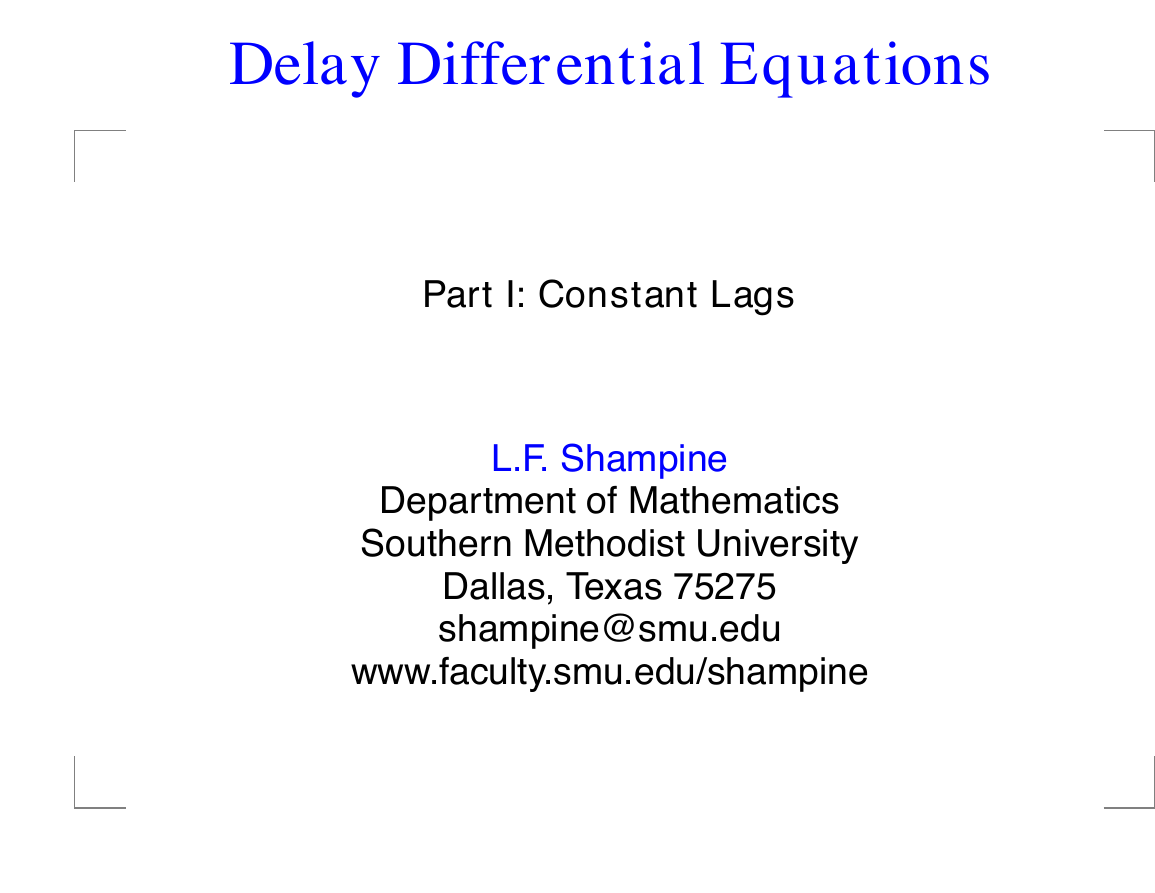
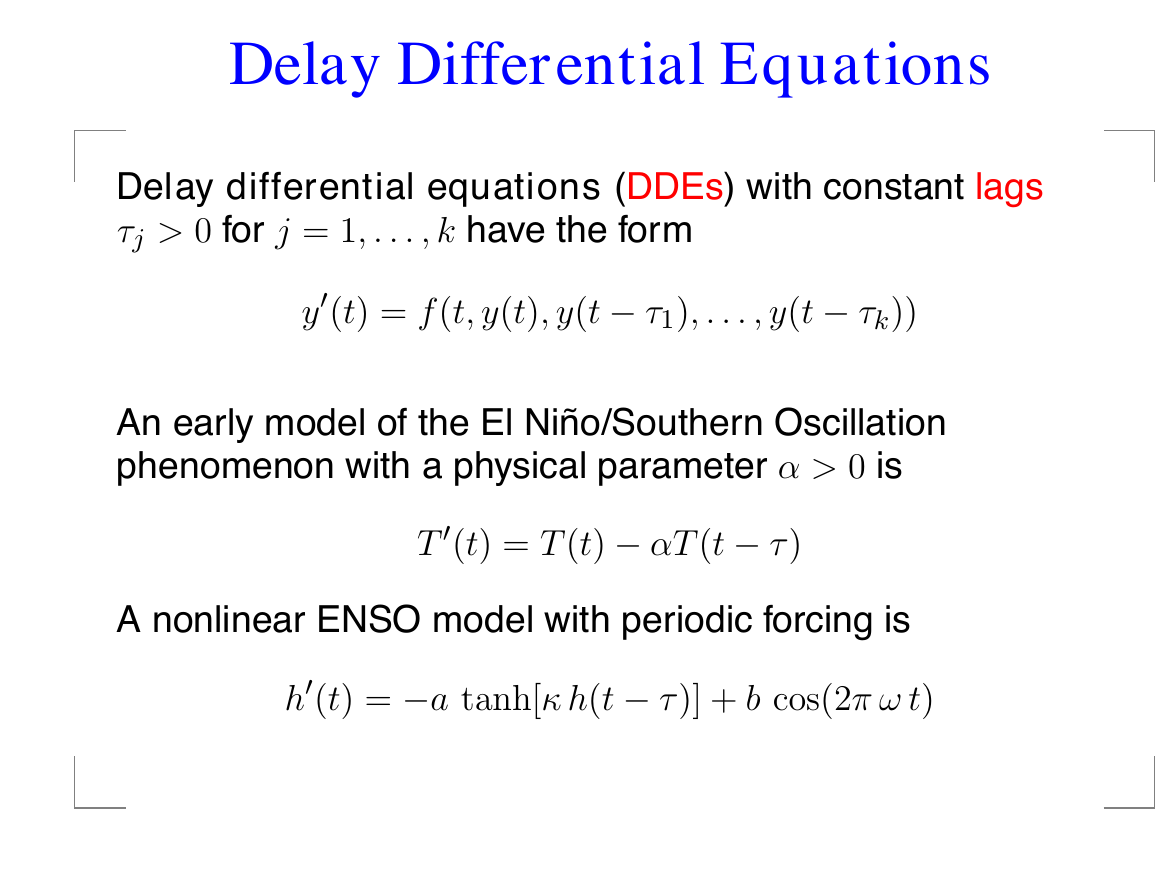

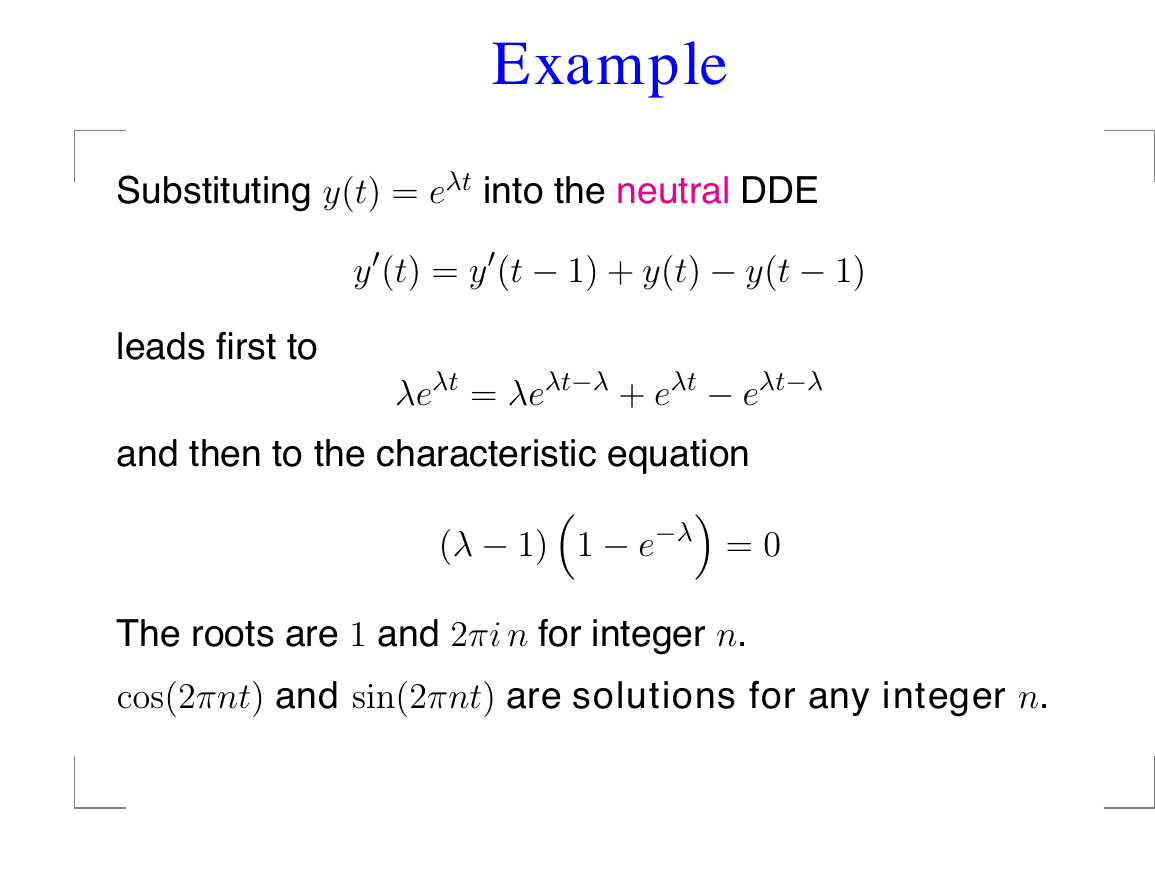
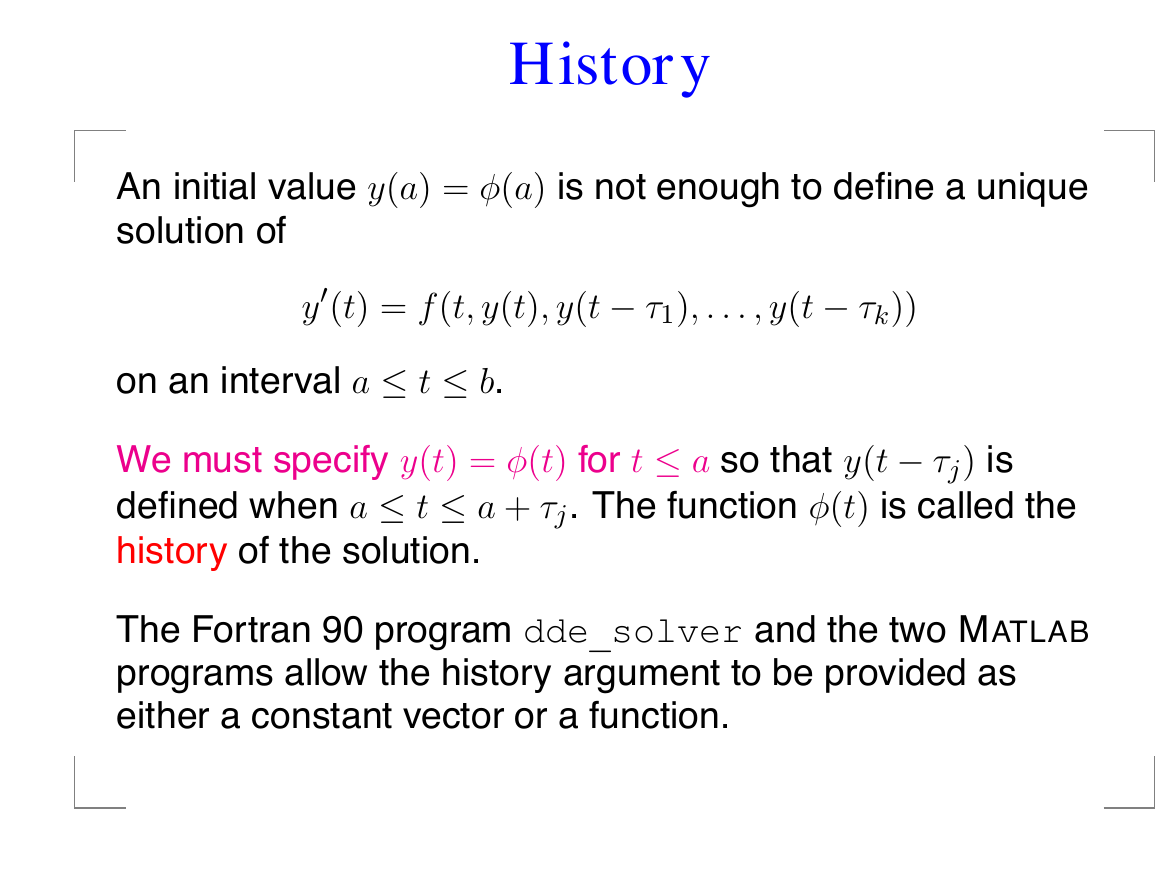
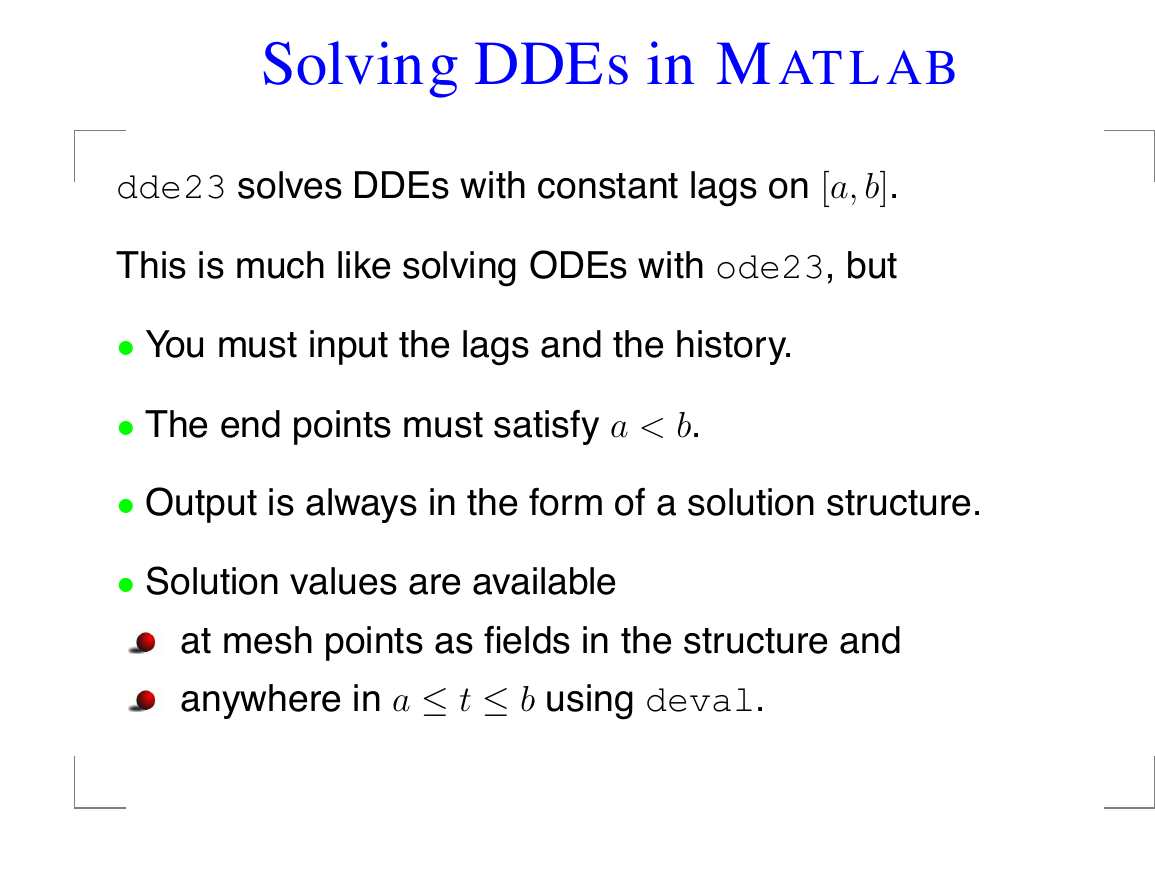
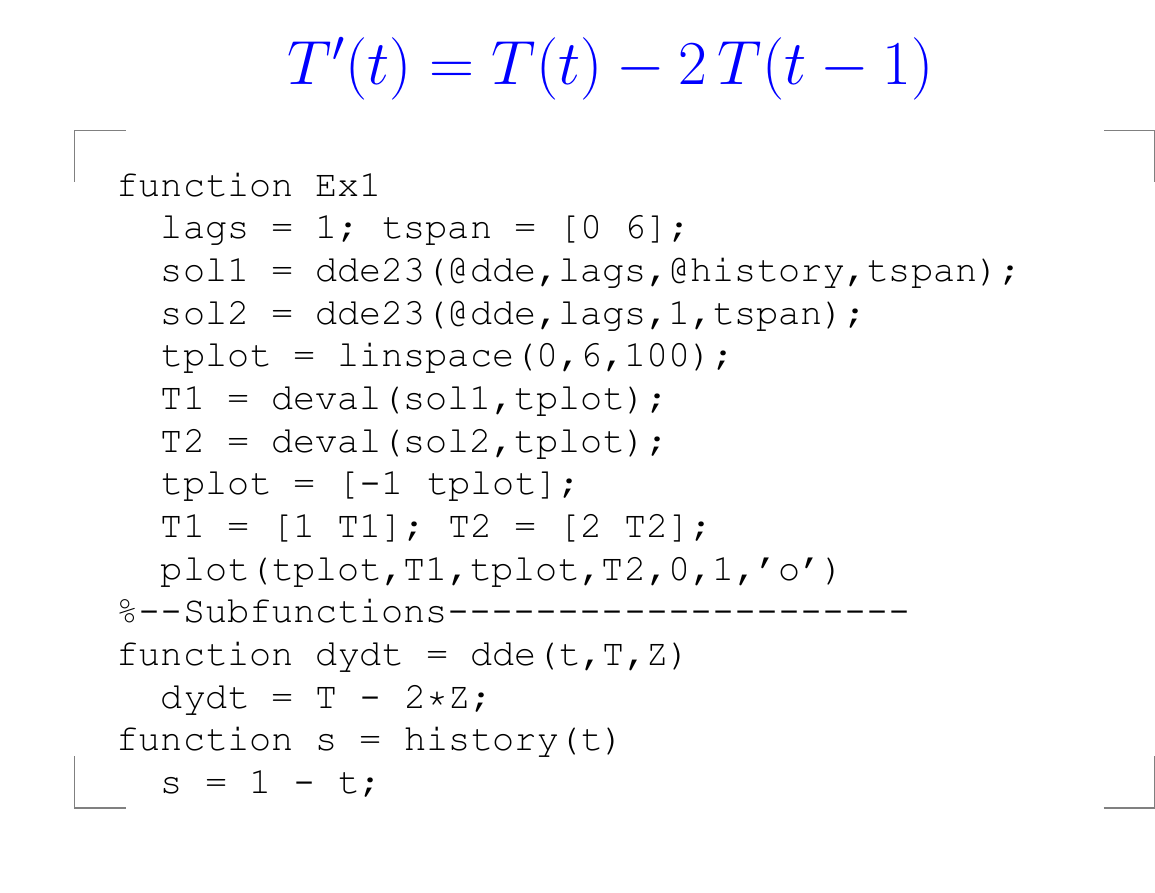
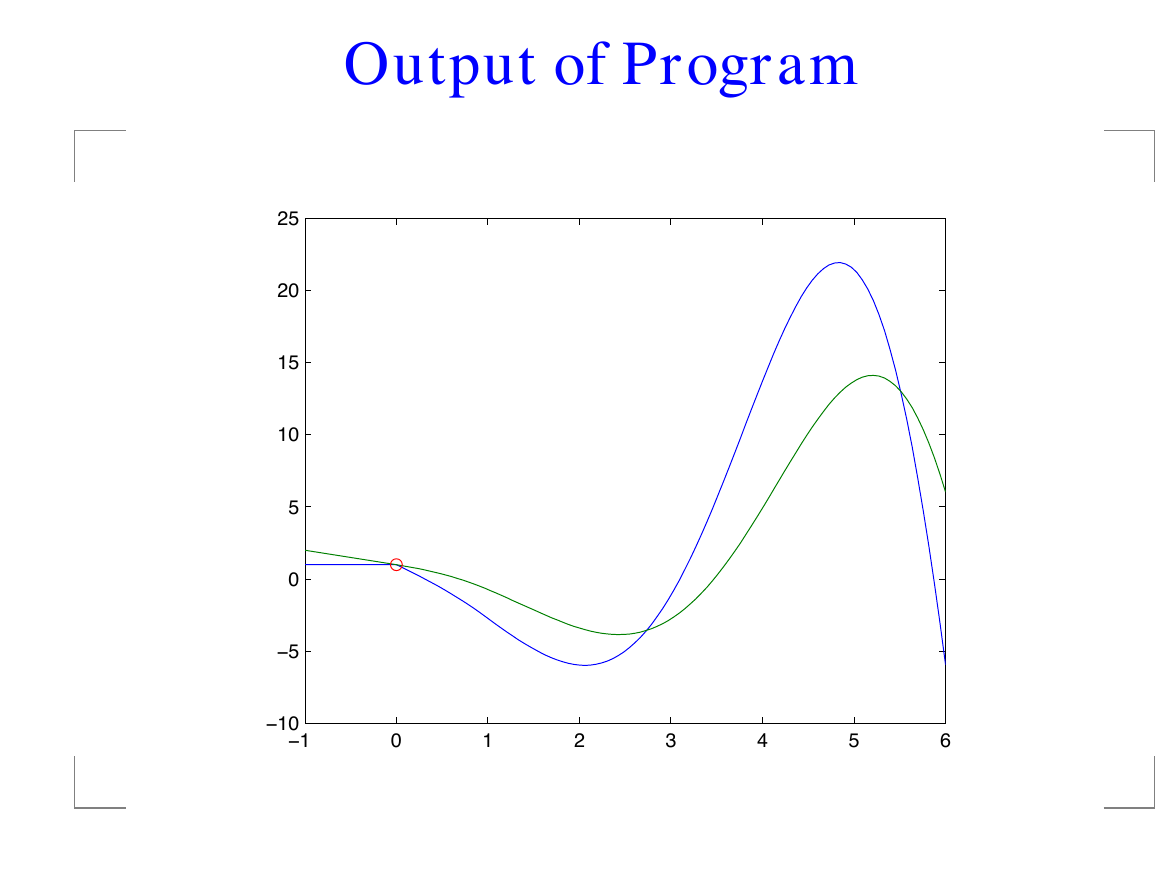








 2023年江西萍乡中考道德与法治真题及答案.doc
2023年江西萍乡中考道德与法治真题及答案.doc 2012年重庆南川中考生物真题及答案.doc
2012年重庆南川中考生物真题及答案.doc 2013年江西师范大学地理学综合及文艺理论基础考研真题.doc
2013年江西师范大学地理学综合及文艺理论基础考研真题.doc 2020年四川甘孜小升初语文真题及答案I卷.doc
2020年四川甘孜小升初语文真题及答案I卷.doc 2020年注册岩土工程师专业基础考试真题及答案.doc
2020年注册岩土工程师专业基础考试真题及答案.doc 2023-2024学年福建省厦门市九年级上学期数学月考试题及答案.doc
2023-2024学年福建省厦门市九年级上学期数学月考试题及答案.doc 2021-2022学年辽宁省沈阳市大东区九年级上学期语文期末试题及答案.doc
2021-2022学年辽宁省沈阳市大东区九年级上学期语文期末试题及答案.doc 2022-2023学年北京东城区初三第一学期物理期末试卷及答案.doc
2022-2023学年北京东城区初三第一学期物理期末试卷及答案.doc 2018上半年江西教师资格初中地理学科知识与教学能力真题及答案.doc
2018上半年江西教师资格初中地理学科知识与教学能力真题及答案.doc 2012年河北国家公务员申论考试真题及答案-省级.doc
2012年河北国家公务员申论考试真题及答案-省级.doc 2020-2021学年江苏省扬州市江都区邵樊片九年级上学期数学第一次质量检测试题及答案.doc
2020-2021学年江苏省扬州市江都区邵樊片九年级上学期数学第一次质量检测试题及答案.doc 2022下半年黑龙江教师资格证中学综合素质真题及答案.doc
2022下半年黑龙江教师资格证中学综合素质真题及答案.doc